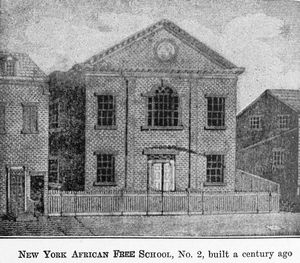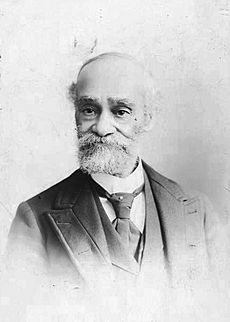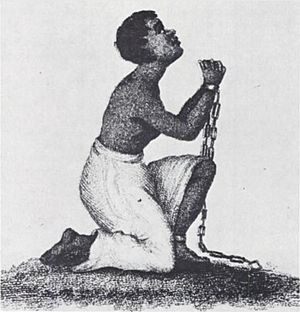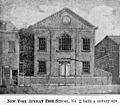Patrick H. Reason facts for kids
Patrick Henry Reason (born Patrice Rison on March 17, 1816 – died August 12, 1898) was one of the first African-American artists to work as an engraver and lithographer in the United States. He was also a strong supporter of the movement to end slavery, known as an abolitionist. His brother, Charles L. Reason, was also an abolitionist. Patrick Reason was a leader in a special club called a fraternal order. He helped his group, Hamilton Lodge No. 710 in New York, become part of the larger Grand United Order of Odd Fellows in America.
Early Life and Learning

Patrick Reason was born in New York City in 1816. He was one of four children. His father, Michel Rison, came from Guadeloupe, an island in the Caribbean. His mother, Elizabeth Melville, was from Saint-Domingue, which is now the country of Haiti. Patrick was given the name Patrice Rison when he was baptized in April 1816 at St. Peter's Catholic Church.
Patrick and his two brothers, Elver and Charles L. Reason, went to the African Free School in New York. This school was important for educating African-American children. When Patrick was 13, he drew a picture of the school building. This drawing was later engraved and used in a book about the school in 1830. After school, he became an apprentice to Stephen Henry Gimber. Gimber was an English engraver and lithographer in the city, and he taught Patrick these skills.
His Artistic Career
Patrick Reason opened his own art shop. There, he created engravings of people's faces and other pictures. Many of his works were for books and magazines that supported the anti-slavery movement. He also made art for individuals.
Some of his famous engravings include:
- A picture from 1835 showing a kneeling female slave, which became a powerful symbol.
- A portrait of United States Senator Benjamin Tappan from 1840.
- The front page portrait for the 1849 book by Henry Bibb. Bibb had escaped slavery and became a speaker against it.
- An engraving for the coffin plate of Daniel Webster, a famous American statesman.
Reason also made a lithograph portrait of Henry Bibb in 1840.
Patrick Reason was part of a group called the New York Philomathean Society. They wanted to join a larger American club, the Independent Order of Odd Fellows, but they were not allowed. So, they found a British-based group called the Grand United Order of Odd Fellows. They were accepted as Philomathean Lodge No. 646. This lodge then started Hamilton Lodge No. 710 in New York. Reason designed the special certificate that members received. He even served as the leader of his lodge for a time. In 1858, he created a special ceremony called the Ruth degree, which was the first one given to female members.
In 1869, Patrick Reason and his family moved to Cleveland, Ohio. He joined a company there called Sylvester Hogan. He continued to create jewelry and make plate engravings until he passed away in 1898.
Family Life
In 1862, Patrick Reason married Esther Cunningham (1835–1920), who was from Leeds, England. They had a son in 1867, whom they named Charles Lewis Reason, after Patrick's brother. This son grew up to become a doctor and practiced medicine in Cleveland, Ohio. Charles Reason later died without any children of his own.
Images for kids






